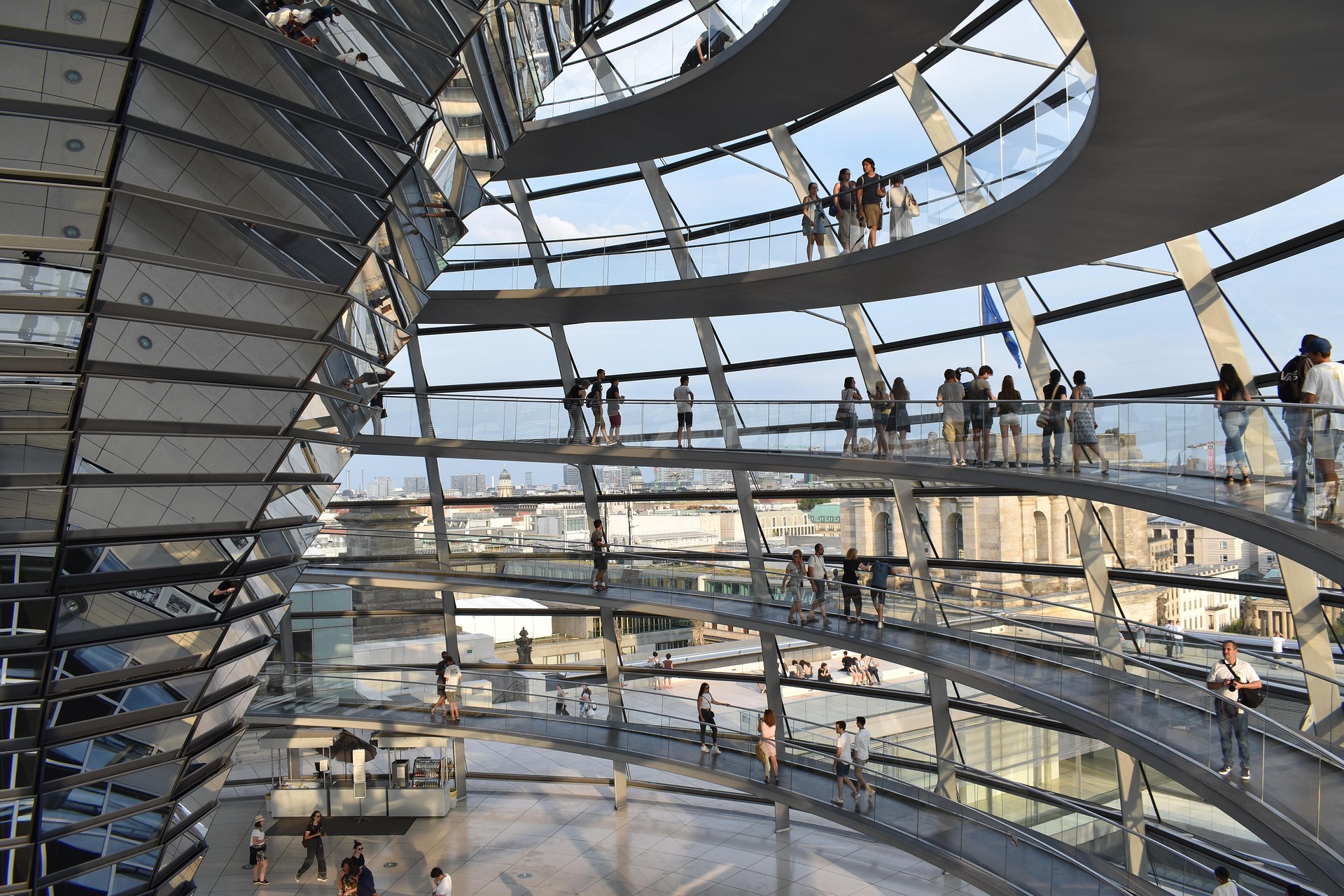Germany as a Leader in European Digital Infrastructure
The German real estate market is undergoing a major transformation driven by the expansion of data centers. Frankfurt ranks second in Europe after London. The total IT load in the colocation sector is currently around 1.3 GW and is expected to reach 3.3 GW by 2029. In the Frankfurt region alone, the operational capacity is around 745 MW (“live IT load”), with 542 MW under construction and another 383 MW in planning. The value of the German data center market reached USD 7.71 billion in 2024 and is projected to rise to USD 12.84 billion by 2030 – an annual growth rate of 8.87%.
Artificial intelligence is a key driver of this expansion. The generative AI segment is expected to grow by 560% by 2031, reaching USD 16.5 billion. Microsoft will invest EUR 3.2 billion in its German cloud regions, the Schwarz Group is planning multi-billion-euro investments, and Amazon has pledged EUR 8.8 billion in Frankfurt by 2026.
Record Investments and Rising Land Prices
Germany is directing billions of euros into digital infrastructure. Annual investments in colocation expansion amount to around EUR 2 billion, with total investments expected to exceed EUR 24 billion by 2029. Land prices for data centers are at record highs: in Frankfurt and Berlin, industrial land values have doubled since 2023. The stabilized leasing value per megawatt averages EUR 15.5 million, while land acquisition costs are around EUR 1.1 million per MW. Frankfurt remains the strongest market, with vacancy rates below 5%, and colocation prices have risen by 5–10% year-on-year.
Energy Regulations Driving Structural Change
Germany’s new Energy Efficiency Act introduces strict requirements. From January 2027, all data centers must operate with 100% renewable energy, and the PUE (Power Usage Effectiveness) of new facilities must not exceed 1.2. German data centers consume about 17.9 billion kilowatt-hours annually, 88% of which already comes from renewable sources.
However, grid connection is becoming a critical bottleneck. New data centers in Germany face waiting times of more than seven years for connection. In Brandenburg alone, 170 applications have been filed with a combined capacity of 22 GW – yet only two 100-MW facilities have been connected to date.
Poland as an Emerging Regional Competitor
Poland’s data center market is experiencing rapid growth fueled by digital transformation. The market was valued at USD 2.358 billion in 2024 and is expected to reach USD 5.41 billion by 2035 – a CAGR of 7.84%. Installed capacity is currently below 200 MW but will exceed 500 MW by 2030, nearly tripling today’s level.
Warsaw remains the key regional hub with around 28 colocation sites, accounting for about one-third of all Polish capacity. Microsoft announced a PLN 2.8 billion investment in February 2025, Google has invested over USD 2 billion, and Vantage is planning a 64-MW campus.
Competitive Advantages and Development Challenges
Poland offers strategic advantages: a central European location linking East and West, lower operational costs compared to FLAP-D markets, and an increasingly stable investment environment. Capital from Western Europe is flowing into Poland, seen as a “positive investment island.”
The main challenge remains power grid connection. Transmission operator PSE receives applications totaling 500–1000 MW. Between 2015 and 2021, nearly 6,000 connection requests were denied. PSE has planned an additional 1,200 MW of capacity for data centers by 2034.
Market Comparison and Growth Outlook
The German market is over three times larger than Poland’s (USD 7.71 billion vs. USD 2.36 billion). However, Poland is growing much faster – 15.73% annually compared to Germany’s 8.87%.
Frankfurt remains Europe’s second-largest data center hub and hosts DE-CIX, the world’s largest internet exchange point. Warsaw is the fastest-growing hub in the CEE region, concentrating one-third of Poland’s total capacity and serving as a bridge between Western and Eastern Europe.
AI as the Growth Engine
Artificial intelligence is reshaping the demand for computing infrastructure. Global data center power demand is expected to triple by 2030. Germany’s AI market will reach USD 8.29 billion by 2030, while Poland’s AI segment will grow by 35% annually. AI racks reach densities of 40–80 kW and require liquid cooling systems.
Germany’s data center market will reach USD 12.84 billion in value and 3.3 GW of installed capacity (up from 1.3 GW) by 2030, contributing EUR 23 billion to GDP. Poland’s market will reach USD 5.41 billion by 2035 and is positioned to become the leading hub for green data centers in CEE. Warsaw will emerge as a key workload gateway for FLAP-D markets.
Data Centers as an Economic Driver
The expansion of the data center market in Germany significantly impacts the economy, particularly amid ongoing digital transformation. Investments, especially in Frankfurt, attract operators seeking long-term growth opportunities. Modern infrastructure and advanced cooling systems make these facilities highly attractive for tenants looking for efficient colocation solutions.
Poland, meanwhile, is following a similar trajectory, drawing inspiration from the German model – particularly regarding land and site development for new projects. Analyses by Vantage and JLL show how data centers are transforming both real estate and energy markets, driving regional growth across Central and Eastern Europe.
AI as the Growth Engine
Artificial intelligence is reshaping the demand for computing infrastructure. Global data center power demand is expected to triple by 2030. Germany’s AI market will reach USD 8.29 billion by 2030, while Poland’s AI segment will grow by 35% annually. AI racks reach densities of 40–80 kW and require liquid cooling systems.
Germany’s data center market will reach USD 12.84 billion in value and 3.3 GW of installed capacity (up from 1.3 GW) by 2030, contributing EUR 23 billion to GDP. Poland’s market will reach USD 5.41 billion by 2035 and is positioned to become the leading hub for green data centers in CEE. Warsaw will emerge as a key workload gateway for FLAP-D markets.
Data Centers as an Economic Driver
The expansion of the data center market in Germany significantly impacts the economy, particularly amid ongoing digital transformation. Investments, especially in Frankfurt, attract operators seeking long-term growth opportunities. Modern infrastructure and advanced cooling systems make these facilities highly attractive for tenants looking for efficient colocation solutions.
Poland, meanwhile, is following a similar trajectory, drawing inspiration from the German model – particularly regarding land and site development for new projects. Analyses by Vantage and JLL show how data centers are transforming both real estate and energy markets, driving regional growth across Central and Eastern Europe.




